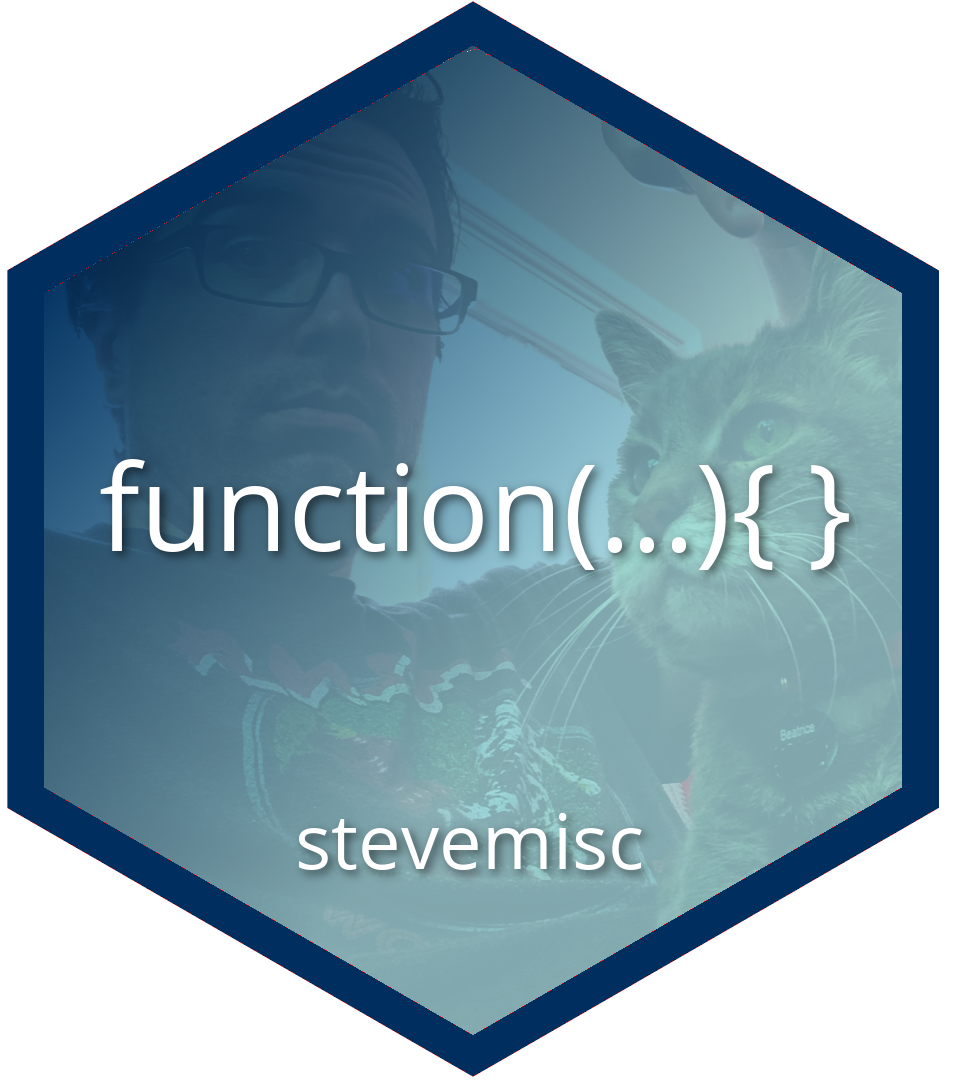
{stevemisc} is an R package that includes various functions and tools that I have written over the years to assist me in my research, teaching, and public presentations (i.e. stuff I put on my blog). I offer it here for a public release because 1) I am vain and think I want an entire, eponymous ecosystem in the R programming language (i.e. the “steveverse”) and 2) I think there are tools here that are broadly useful for users that I’m trying to bundle with other things that I offer (prominently {steveproj}). Namely, {stevemisc} offers tools to assist in data organization, data presentation, data recoding, and data simulation.
Installation
You can install this on CRAN.
install.packages("stevemisc")You can install the development version of {stevemisc} from Github via the devtools package. I suppose using the remotes package would work as well.
devtools::install_github("svmiller/stevemisc")